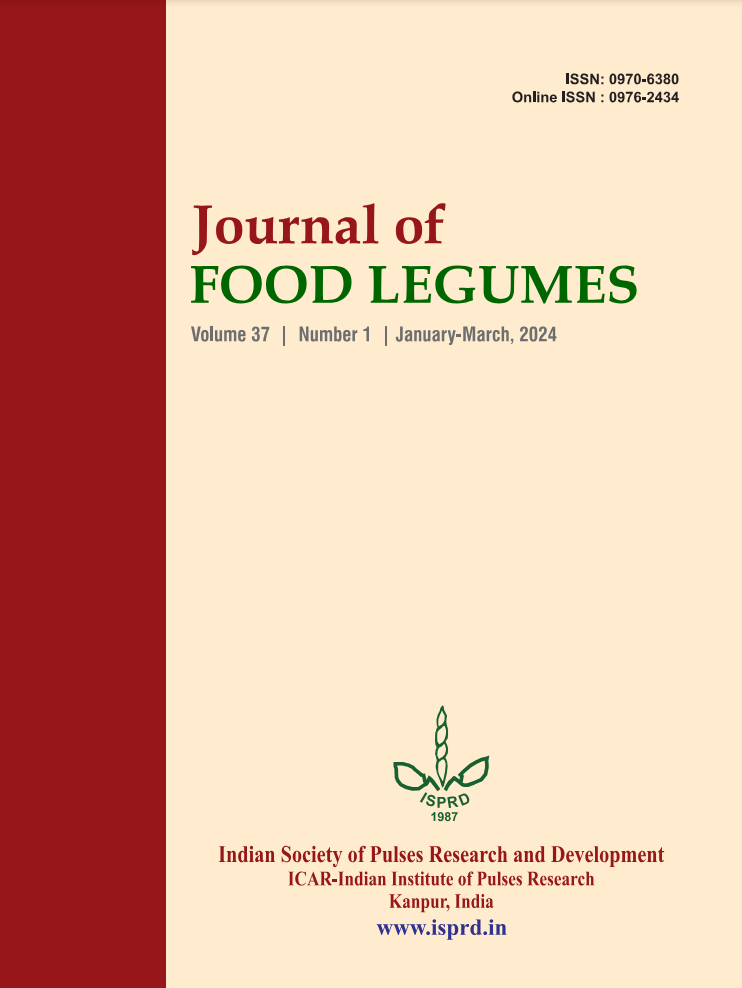New lentil variety RKL 58F-3715: a case study depicting the emergence of desirable transgressive segregants
DOI:
https://doi.org/10.59797/jfl.v37.i1.174Keywords:
Kota Masoor 4, Lentil variety, Seed trait, Spontaneous mutation, Transgressive segregantsAbstract
Lentil is one of the world’s most important cool-season grain legumes. The frequency of natural recombinants and segregants under natural conditions is very low in lentil due to their cleistogamous flower. The present investigation depicted the emergence of desirable transgressive segregants obtained from spontaneous mutation. Exploiting these hypervariable mutants, a highyielding lentil variety RKL 58F-3715 (Kota Masoor 4; KM 4) was developed from the progeny of a natural variant. The identified single deviated plant from the seed production plot of DPL 62 was probably a spontaneous mutation. During generation advancement, the progenies showed hypervariable segregants, especially for seed morphological traits, such as size, shape, colour and texture. The breeding cycles following rigorous selection under modified pedigree and single seed descent delivered the high-yielding stable genotype KM 4. Hypervariable progenies were obtained from natural mutants, distinguished in morphological traits such as earliness, light foliage colour, and prominent tendrils from the parent variety. The national weighted mean over locations over the year of KM 4 for grain yield was 1865 kg/ha, with yield superiority of 22.80% over national check DPL 62. Considerable resistance against major diseases, i.e., wilt and rust, makes it a durable genotype for commercial cultivation in major lentil-growing areas of India.






